Samsung Galaxy smartphones are among the most popular in the world, and for good reason. They are beautiful and highly functional phones with great screens and user-friendly interface. From the premium S series to the budget J series, Samsung's 2018 smartphones are designed to suit all tastes and budgets.
Many Samsung phones dropped in price shortly after they hit the market, so you can spend less on a brand new gadget than you thought. Let's take a look at the best Samsung Galaxy phones, with their main pros and cons.
10.Samsung Galaxy A3
The average price is 15 450 rubles.
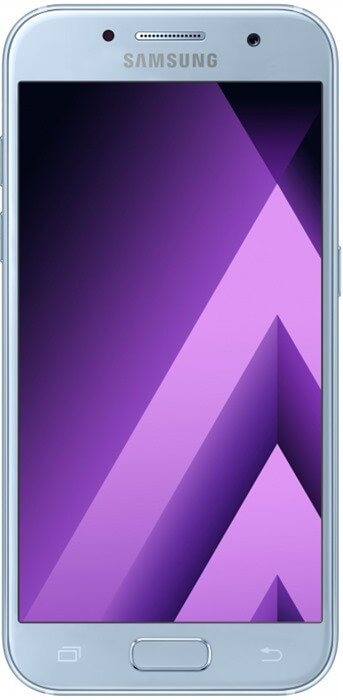
- smartphone with Android 6.0
- support for two SIM-cards
- screen 4.7 ″, resolution 1280 × 720
- 13 MP camera, autofocus, F / 1.9
- memory 16 GB, memory card slot
- 3G, 4G LTE, LTE-A, Wi-Fi, Bluetooth, NFC, GPS, GLONASS
- RAM 2 GB
- battery 2350 mAh
- weight 138 g, WxHxT 66.20 × 135.40 × 7.90 mm
In 2017, Samsung has updated its A series phones, which includes the A3, A5 and A7 models. The bestseller is the A3, which is the smallest of the three with a 4.7-inch screen. The design of the device looks very similar to the Galaxy S7, due to the slightly curved and rounded edges. This makes the gadget very comfortable in the hand.
One of the most exciting design and build features of the A3 is the new IP68 rating. That is, the phone can (but does not need to) be immersed in water shallow for up to 30 minutes and after this test it will work.
Under the hood of the Galaxy A3 is 16GB of user data storage, 2GB of RAM, a 2350mAh battery, and an eight-core Exynos 7870 mid-range chipset. Even the latest games will run on the smartphone, albeit at medium or low settings.
Pros:
- It is possible to add up to 256GB of storage thanks to the microSD card slot.
- There is NFC.
- All connectors are very conveniently located.
- Convenient "always on screen" function.
- Surprisingly long autonomy (up to 2 days of active work), given the small battery capacity.
- The main camera is 13 MP with an aperture of f / 1.9 "there are not enough stars from the sky", but in normal lighting the photos come out bright and clear.
Minuses:
- Slippery body.
- Scratches quickly appear on the back cover.
9.Samsung Galaxy A5
The average cost is 19,490 rubles.

- smartphone with Android 6.0
- support for two SIM-cards
- screen 5.2 ″, resolution 1920 × 1080
- camera 16 MP, autofocus, F / 1.9
- memory 32 GB, memory card slot
- 3G, 4G LTE, Wi-Fi, Bluetooth, NFC, GPS, GLONASS
- RAM 3 GB
- battery 3000 mAh
- weight 159 g, WxHxT 71.40 × 146.10 × 7.90 mm
The next number in the ranking of Samsung smartphones is the elegant 5.2-inch smartphone, updated by the manufacturer in 2017.
Major changes to the Galaxy A5 include a new Always On Display feature, IP68 waterproofing and a larger 3000mAh battery.
The performance of the smartphone has also been significantly improved. It was equipped with a faster Exynos 7880 processor clocked at 1.9 GHz, increased the RAM from 2 GB to 3 GB and doubled the amount of ROM to 32 GB. The A5 now supports microSD cards up to 256GB. The cameras have also been improved to 16MP both front and rear (from 5MP and 13MP respectively).
Pros:
- An excellent display with a resolution of 2560 × 1440 pixels, natural color reproduction and plenty of brightness.
- There is NFC.
- There is fast charging.
- Good build quality.
Minuses:
- The new Galaxy A5 lacks a heart rate scanner.
- The camera lacks optical stabilization, sometimes the pictures are blurry.However, under normal lighting conditions, most photos are quite detailed.
8. Samsung Galaxy J7
You can buy, on average, 14,340 rubles.
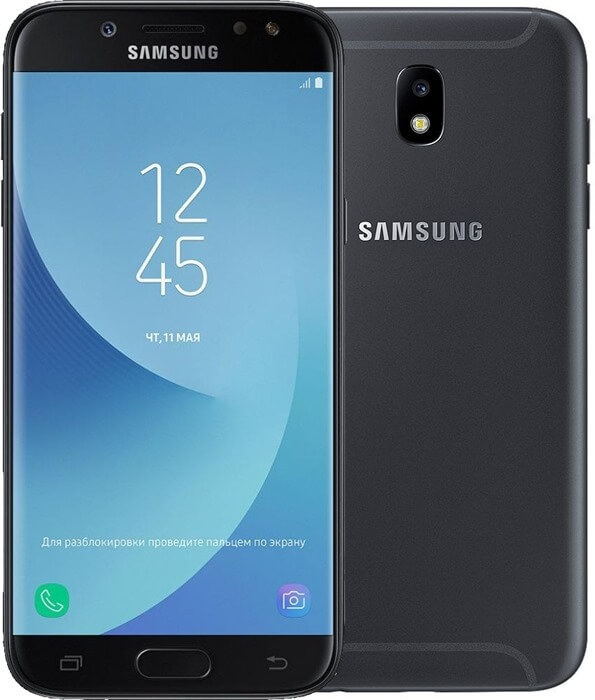
- smartphone with Android 7.0
- support for two SIM-cards
- screen 5.5 ″, resolution 1920 × 1080
- 13 MP camera, autofocus, F / 1.7
- memory 16 GB, memory card slot
- 3G, 4G LTE, LTE-A, Wi-Fi, Bluetooth, NFC, GPS, GLONASS
- RAM 3 GB
- battery 3600 mAh
- weight 181 g, WxHxT 74.80 × 152.50 × 8 mm
Refreshed in 2017, the 5.5-inch model sits somewhere between the entry-level (J series) and mid-range (A series). It is equipped with 16 GB of flash memory and 3 GB of RAM. There is an additional slot to accommodate a second SIM card and a microSD card slot with the option to add an additional 256GB of storage.
The Galaxy J7 (2017) uses the same mid-range processor, the Exynos 7870, as the more expensive Galaxy A3 (2017).
The rear 13-megapixel camera of the smartphone uses a Sony IMX258 sensor with f / 1.7 aperture. It sounds promising on paper, but it doesn't compare to the camera on the Galaxy S8 or other flagships. Nevertheless, the camera is good for its price range. When the lighting conditions are decent, the shots are clear and "noise" is rare.
Pros:
- The body of the smartphone is made of metal and is very pleasant to the touch. The build quality is very good.
- Capacious 3600 mAh battery.
- There is NFC.
- The fingerprint sensor is located on the mechanical Home button, which is very convenient.
Minuses:
- Outdated micro-USB connector.
- The device is not waterproof.
- The camera has no optical stabilization.
7.Samsung Galaxy A8 +
The average price is 32,490 rubles.
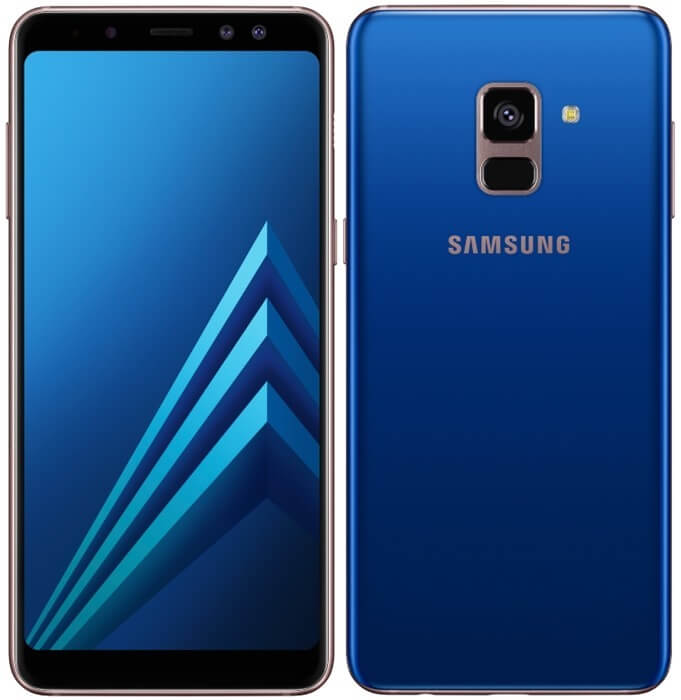
- Android smartphone
- support for two SIM-cards
- screen 6 ″, resolution 2220 × 1080
- camera 16 MP, autofocus, F / 1.7
- memory 32 GB, memory card slot
- 3G, 4G LTE, Wi-Fi, Bluetooth, NFC, GPS, GLONASS
- RAM 4 GB
- battery 3500 mAh
- weight 191 g, WxHxT 75.70 × 159.90 × 8.30 mm
This model is not far from the Galaxy S8 in terms of appearance and can easily be confused with the premium "brother". A large 6-inch display with a Super AMOLED matrix and an aspect ratio of 18.5: 9, unusual for smartphones, occupies 75% of the front panel, compared to 83% for the S8.
As you would expect, the Galaxy A8 + is the best A-range phone to date in terms of specs. It has 32 GB of memory for user data and 4 GB of RAM. Inside the smartphone is also an Exynos 7885 processor with eight cores and a Mali-G71 GPU, which is also equipped with the Galaxy S8.
On the front, there is a dual 16 / 8MP camera with f / 1.9 aperture. It allows you to use Live Focus to achieve a bokeh effect that blurs the background. The 16MP rear camera has an f / 1.7 aperture, which makes it possible to capture excellent quality images even in low light.
Pros:
- It is possible to expand the memory up to 256 GB.
- There is NFC.
- Capacious 3500 mAh battery.
- The fingerprint scanner is located under the camera and is now easier to reach.
- There is fast charging.
Minuses:
- Marked and very slippery body.
- No 4K video recording.
- No wireless charging.
6.Samsung Galaxy A8 (2018)
The average cost in the maximum configuration is 27,490 rubles.
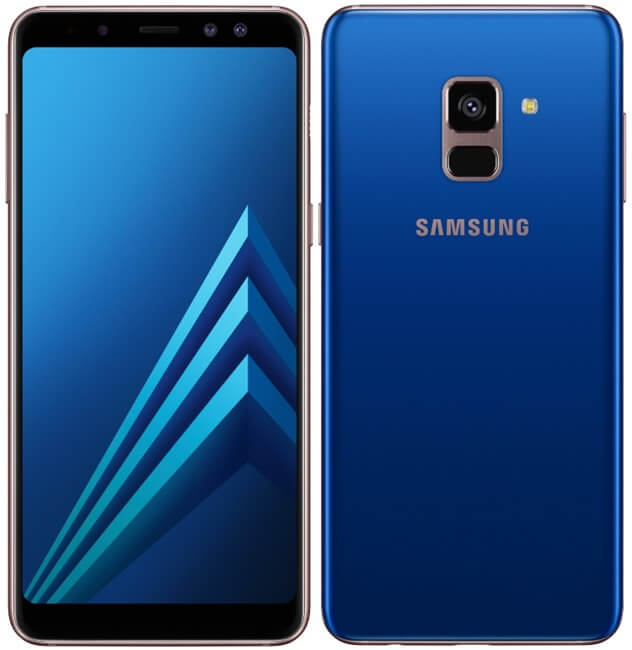
- Android smartphone
- support for two SIM-cards
- screen 5.6 ″, resolution 2220 × 1080
- camera 16 MP, autofocus, F / 1.7
- memory 32 GB, memory card slot
- 3G, 4G LTE, Wi-Fi, Bluetooth, NFC, GPS, GLONASS
- RAM 4 GB
- battery 3000 mAh
- weight 172 g, WxHxT 70.60 × 149.20 × 8.40 mm
If you don't like huge 6-inch smartphones, but 5-inch smartphones seem too small, then what about the 5.6-inch A8? It is not much different from the "big brother" with the Plus prefix. In addition to the display size, there are two more differences - a smaller battery capacity (3000 mAh) and the ability to purchase a version with 64 GB of internal memory, in addition to 32 GB.
Otherwise, the Galaxy A8 is an exact copy of the Galaxy A8 + with all its advantages and disadvantages.
5.Samsung Galaxy Note8
It is sold, on average, for 71,017 rubles in the maximum configuration.
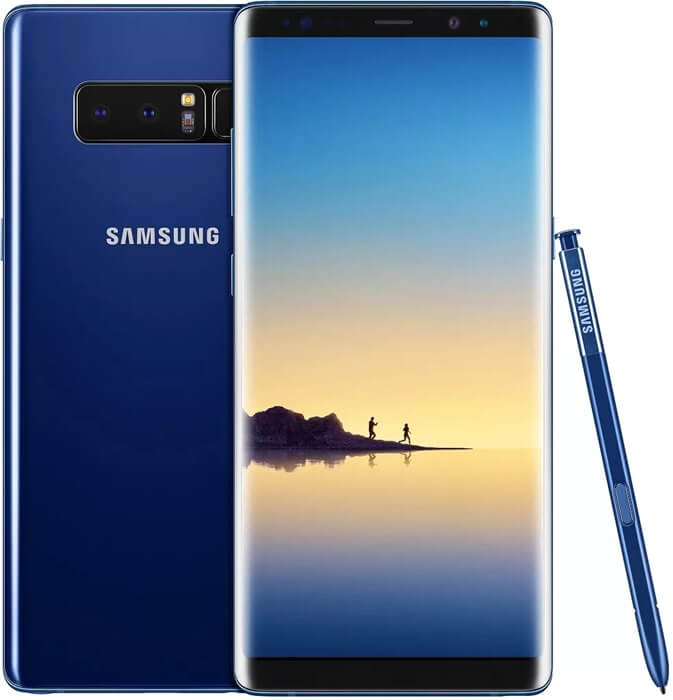
- smartphone with Android 7.1
- support for two SIM-cards
- screen 6.3 ″, resolution 2960 × 1440
- dual camera 12/12 MP, autofocus, F / 1.7
- memory 64 GB, memory card slot
- 3G, 4G LTE, LTE-A, Wi-Fi, Bluetooth, NFC, GPS, GLONASS
- RAM 6 GB
- battery 3300 mAh
- weight 195 g, WxHxT 74.80 × 162.50 × 8.60 mm
The first thing you notice when looking at the Galaxy Note8 is the huge 6.3-inch Super AMOLED display with an 18.5: 9 aspect ratio, which occupies 83% of the front panel.To reduce the thickness of the bezels at the top and bottom of the screen, the manufacturer removed the physical Home button, moved the fingerprint scanner to the back, and integrated a pressure-sensitive Home button inside the display. However, you can always "wake up" the phone with the power button.
The feature of this model is the S Pen stylus. You won't appreciate how useful it is until you try it. You can connect up to 10 functions or apps to the S Pen menu, giving you quick access to the tools you want to use with the stylus. And the high-performance Snapdragon 835 or Exynos 8 Octa 8898M processor (depending on the region), 64 to 128 GB of internal memory and 6 GB of RAM ensure that all applications and games run very quickly and without freezing.
Pros:
- Very bright and high-contrast display for excellent outdoor visibility in all weather conditions.
- It is possible to expand the memory up to 256 GB.
- There is fast and wireless charging.
- There is NFC.
- The main 12/12 MP camera, in addition to optical stabilization, also has an optical Zoom 2x. And the f / 1.7 aperture will ensure good image quality, even in low light.
- The stylus can be used to draw notes even when the screen is in idle mode.
Minuses:
- High price.
- Inconveniently located fingerprint scanner.
4. Samsung Galaxy S8 +
The average price is 54,990 rubles in the maximum configuration.
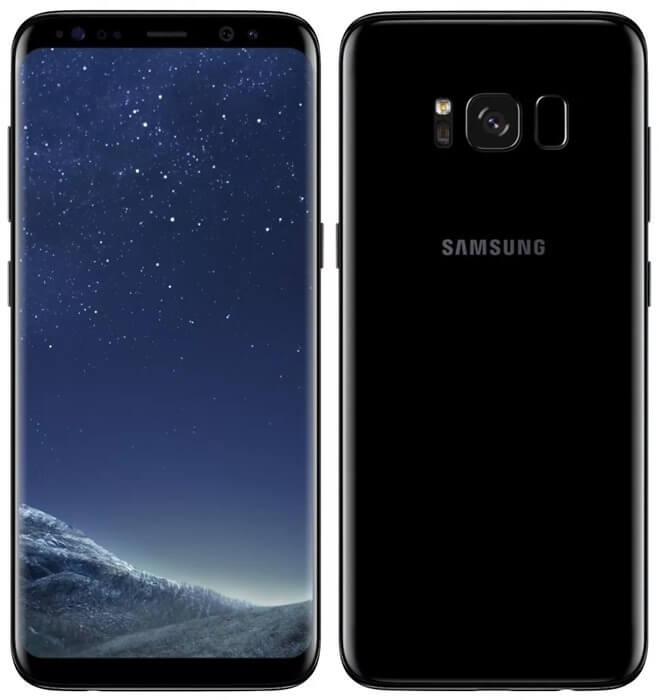
- smartphone with Android 7.0
- support for two SIM-cards
- screen 6.2 ″, resolution 2960 × 1440
- camera 12 MP, autofocus, F / 1.7
- memory 64 GB, memory card slot
- 3G, 4G LTE, LTE-A, Wi-Fi, Bluetooth, NFC, GPS, GLONASS
- RAM 4 GB
- battery 3500 mAh
- weight 173 g, WxHxT 73.40 × 159.50 × 8.10 mm
The Plus model is not much larger than the regular Galaxy S8 model. It's about 10mm taller and 5mm wider, which isn't much considering the screen size is 6.2 inches.
The fingerprint scanner has moved to the back and a pressure-sensitive home button is built into the display.
Like the Galaxy Note8, the S8 Plus has an unusual 18.5: 9 aspect ratio, so the screen is very tall. This makes things like watching videos much more comfortable as you won't see annoying black bars.
A large amount of flash memory (from 64 to 128 GB, depending on the version) and RAM (from 4 to 6 GB) allows you to use your smartphone, without regard to the fact that there is not enough space for the desired program or your favorite music. If the flash memory is still not enough, it can be expanded up to 256 GB by installing a memory card.
A top-of-the-line Exynos 8895 or Snapdragon 835 processor (depending on market), 3500mAh battery and an excellent 12MP main camera with OIS, f / 1.7 aperture and LED flash complete the picture of a smartphone that any user can be proud of.
Pros:
- A bright, high-contrast, huge display that all users admire.
- A near-perfect camera capable of capturing stunning photos, and not only in good lighting conditions.
- There is NFC.
- There is both fast and wireless charging.
- Loud conversational speaker.
- In addition to the fingerprint sensor, there is also an iris scanner.
Minuses:
- Fitting the S8 Plus into a case is almost essential due to its slippery body.
- The button for calling the smart, but often useless assistant Bixby, developers could move to a less accessible place. And in its place, place something more necessary, such as a fingerprint scanner. However, it can be reconfigured.
3. Samsung Galaxy S8
It costs, on average, 37,580 rubles.
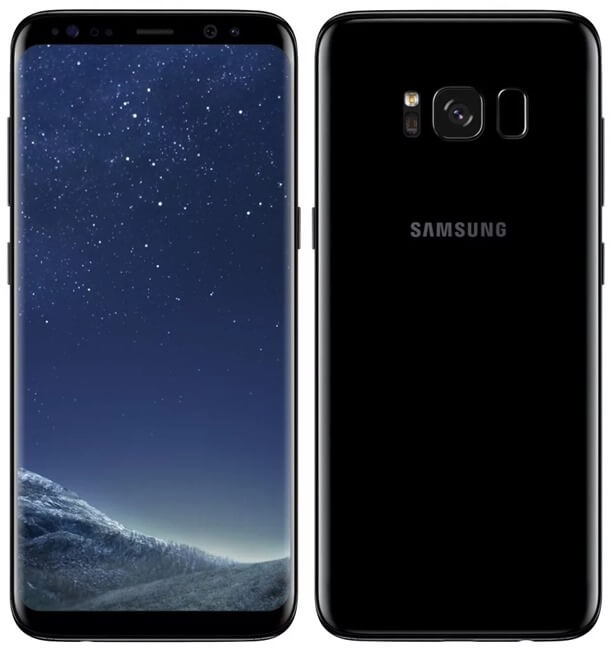
- smartphone with Android 7.0
- support for two SIM-cards
- 5.8 ″ screen, resolution 2960 × 1440
- camera 12 MP, autofocus, F / 1.7
- memory 64 GB, memory card slot
- 3G, 4G LTE, LTE-A, Wi-Fi, Bluetooth, NFC, GPS, GLONASS
- RAM 4 GB
- battery 3000 mAh
- weight 155 g, WxHxT 68.10 × 148.90 × 8 mm
Screen size is the biggest difference between Galaxy S8 and Galaxy S8 Plus. The smaller version has a 5.8-inch display with an aspect ratio of 18.5: 9.
- However, both phones have a bezel-less curved screen, so you no longer need to buy a higher model to enjoy its fantastically beautiful look.
- Another difference between the two popular Samsung smartphones in 2018 is the smaller battery capacity of the S8 - 3000mAh.
- In addition, the G8 does not have a version with 128 GB of flash memory.
As for the rest of the software and hardware, there is no difference between the two models.
2.Samsung Galaxy S9 +
You can buy for 74,990 rubles in the maximum configuration.

- smartphone with Android 8.0
- support for two SIM-cards
- screen 6.2 ″, resolution 2960 × 1440
- dual camera 12/12 MP, autofocus, F / 1.5
- memory 64 GB, memory card slot
- 3G, 4G LTE, LTE-A, Wi-Fi, Bluetooth, NFC, GPS, GLONASS
- RAM 6 GB
- battery 3500 mAh
- weight 189 g, WxHxT 73.80 × 158.10 × 8.50 mm
This new 2018 Samsung smartphone with a huge 6.2-inch display isn't a revolutionary upgrade over the Galaxy S8 +, but it might be better than the long wait for a new device. The front panel of the novelty looks about the same as that of the S8 +. Unsurprisingly, Samsung sticks to the gorgeous bezel-less design that users love. However, the matte finish of the metal frame looks better than the glossy finish of the S8 +.
Like the regular S9, the most expensive phone, the Samsung Galaxy S9 +, is powered by the latest Exynos 8910 processor. This chip is still eight-core, but clocked at up to 2.7 GHz. In the maximum configuration, the amount of RAM is 6 GB, ROM is 256 GB. There are also versions with 64 and 128 GB of built-in storage and all the same 6 GB of RAM.
The biggest innovation on this model is the main 12/12 MP dual camera. It has an aperture that can be automatically adjusted from f / 2.4 to f / 1.5 depending on lighting conditions. According to the manufacturer, this gives 28 percent more light. The phone can also use information from 12 photos taken at the same time to reduce noise by 30 percent.
Pros:
- Fantastic in looks, contrast and color reproduction SuperAMOLED display with Quad HD resolution (Full HD + resolution is the default, but you can change it).
- There is a slot for a memory card.
- There is both fast and wireless charging.
- There is an iris scanner in addition to the traditional fingerprint scanner.
- There is NFC.
- Speakers with Dolby Atmos technology deliver loud, rich and very clear sound. Plus there is an excellent headset included.
Minuses:
- The AR Emoji feature needs some work. According to user reviews, their animated versions look somehow "wretched".
- Bixby's smart assistant does not understand Russian.
1. Samsung Galaxy S9
Can be purchased for 47,100 rubles.
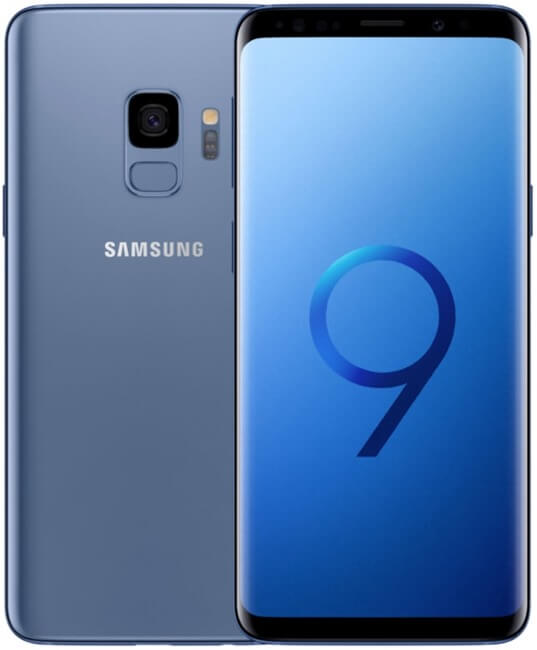
- smartphone with Android 8.0
- support for two SIM-cards
- 5.8 ″ screen, resolution 2960 × 1440
- camera 12 MP, autofocus, F / 1.5
- memory 64 GB, memory card slot
- 3G, 4G LTE, LTE-A, Wi-Fi, Bluetooth, NFC, GPS, GLONASS
- RAM 4 GB
- battery 3000 mAh
- weight 163 g, WxHxT 68.70 × 147.70 × 8.50 mm
The four main differences between the S9 and the S9 + are:
- Single 12MP main camera. At the same time, it has the same double aperture, capable of "squinting" and "opening eyes" from f / 1.5 to f / 2.4, like the S9 +.
- Less RAM and ROM-memory - 4/64 GB, respectively. While you can find more storage in smartphones from other manufacturers, this virtual storage is sufficient for most users. And if you don't have enough, you can always install a microSD card up to 400GB.
- Smaller battery capacity - 3000 mAh versus 3500 mAh in the S9 +.
- The smaller screen size is 5.8 inches with an aspect ratio of 18.5: 9.
But the price of the S9 is significantly lower than that of the S9 +. And the pros and cons of both models are the same. All in all, the Nine can do everything that one can expect from a flagship phone at this price and with these characteristics.
Summing up: which Samsung phone is better to buy
If you are looking for an impressively designed all-rounder, capable of everything a modern smartphone can do, and even slightly “climbing” into the realm of professional cameras, choose the Samsung Galaxy S9, Galaxy S9 +, Galaxy S8 + or Galaxy S8.
If you've always dreamed of a big and sophisticated phone with a stylus, then invest in the Samsung Galaxy Note8.
The Samsung Galaxy A8 and A8 + are perfectly balanced offerings in terms of price and performance.
If you do not need top-end performance (for which you often have to pay extra), but you need the most comfortable smartphone with NFC and an excellent display in your hand, take a look at the Samsung Galaxy A3, Samsung Galaxy A5 or Samsung Galaxy J7.
If you haven't found a suitable option, we recommend you wait for the most anticipated new product from Samsung - Galaxy Note 9. It will have a 6.4-inch display, a 3850 or 4000 mAh battery, and a fingerprint scanner integrated into the screen. Well, the price at first is likely to be cosmic, to match the design.

